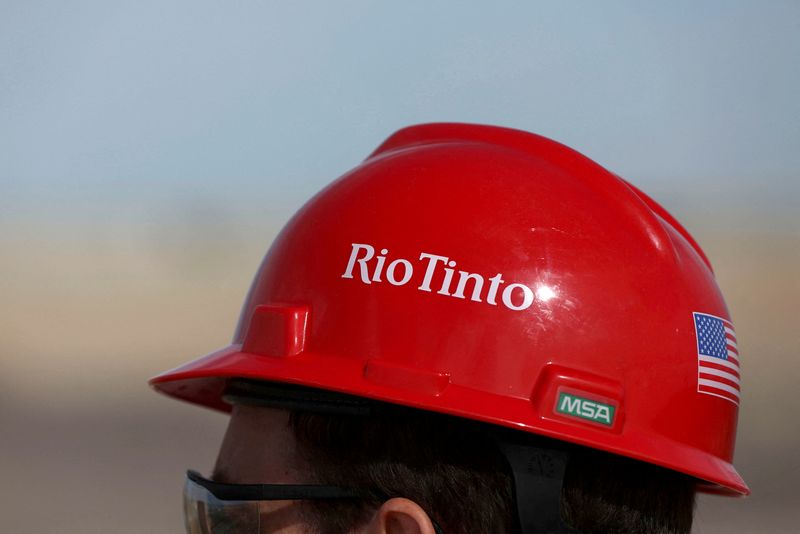
© Reuters. FILE PHOTO: The Rio Tinto logo is displayed on a visitor’s helmet at a borates mine in Boron, California, U.S., November 15, 2019. REUTERS/Patrick T. Fallon/File Photo
(Reuters) – Rio Tinto (NYSE:) on Tuesday reported a marginal drop in third-quarter iron ore shipments, hurt by weak global demand including in top metals consumer China which has also been struggling with a slowdown in its steel-intensive realty sector.
Rio has been battling with a surge in production costs while prices of steel-making material iron ore continue to slide over soft demand as risks of a global recession rise.
Iron ore prices are on track to end 2022 at their lowest in the last three or four years and will probably languish next year as well, as China and Europe cut steel output, while pressure mounts from additional supply.
“China’s economy has been challenged by ongoing COVID-lockdowns, power shortages in summer, and continued weakness in the property market,” the company said.
The world’s biggest iron ore producer shipped 82.9 million tonnes (Mt) of the steel-making commodity in the three months ended Sept. 30, compared with 83.4 Mt a year earlier.
Rio, however, said that on a quarter-on-quarter basis, shipments rose 4%, despite two rail outages, including one on the Guidai-Darri line.
The miner reaffirmed its annual iron ore shipments forecast of 320 Mt to 335 Mt, but said that the outlook was dependent on ramping-up its Gudai-Darri and Robe Valley projects, and the availability of skilled labour.
At Gudai-Darri, the ramp up is progressing as planned, the company said, adding that full capacity run rate is expected to be achieved during 2023.
Rio retained its annual cost outlook for iron ore, but raised estimates for to between 150 cents and 170 cents per pound from 130 cents to 150 cents a pound.
In a separate announcement, Rio said it would update a nearly 50-year-old agreement to develop the Rhodes Ridge iron ore project in the East Pilbara region of Western Australia.


Be the first to comment